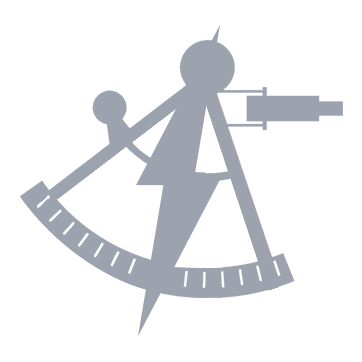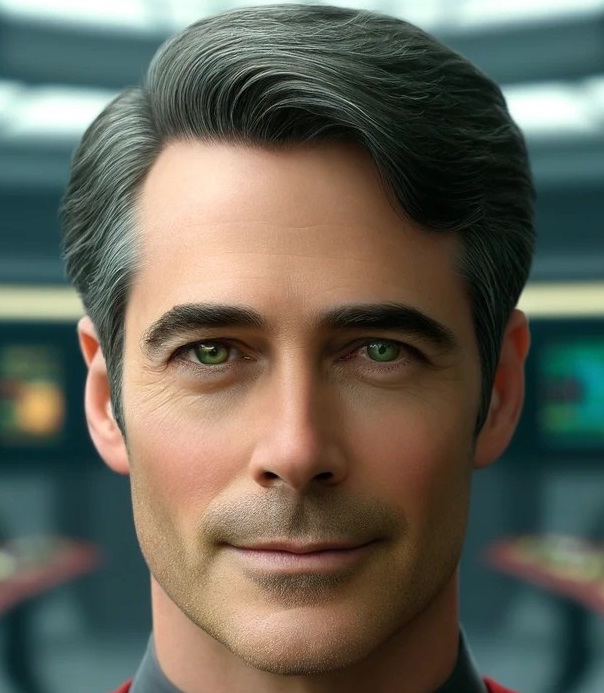The USS Ulysses hung in space like a wounded leviathan, its sleek hull marred by the scars of its recent mission to Raeya III. The ship held station in the shadow of Starbase 21, where repair teams worked tirelessly to restore the Sovereign-class starship to its former glory.
Long swaths of ablative armor and hull plating were missing, exposing internal systems that sparked faintly in the vacuum. Pockmarks from debris strikes and weapons fire dotted the hull, stark reminders of the chaos the ship had endured during the Raeyan Incident.
Dozens of worker bees flitted around the Ulysses, their small hulls glowing faintly as they maneuvered replacement panels and repair modules into position. Faint beams of blue light arced across the ship as teams welded new plating, their work illuminated by the ambient glow of the starbase’s repair gantries.
The starboard side of the ship bore the most visible scars: entire sections of the secondary hull were being replaced, and the gaping maw of a plasma conduit breach loomed ominously where the ship had absorbed a direct hit from one of Korrin’s pirate ships. The iconic sweeping saucer, though largely intact, bore streaks of carbon scoring from the battle in orbit of Raeya III and Underspace.
Inside the ship, starbase repair crews worked tirelessly alongside the ship’s company to restore ship systems.
Deck Five, usually a quieter part of the ship’s officer country, was now home to Captain James MacLeod’s quarters as Commander Task Group Nine Seven of the recently reconstituted Task Force 21. Though Ulysses bore its scars openly—patched panels, exposed conduits, and the faint, acrid scent of burned circuitry—the atmosphere among the crew remained resilient. The ship was healing, just as they all were.
MacLeod’s new cabin was no mere officer’s quarters. These were VIP accommodations reserved for dignitaries or senior commanders temporarily stationed aboard. They were as spacious as his former quarters on Deck Two, though the absence of his personal touches gave the cabin a different feel—functional, purposeful, yet not entirely his. The doors slid open as MacLeod approached, revealing a room bathed in soft light. A large viewport dominated one bulked, offering an unobstructed view of Starbase 21’s repair gantries and the glittering stars beyond. To the left, a sitting area with a low table and plush chairs stood around a holographic display unit, its projector dark. A bookshelf lined the far bulked with volumes on leadership, tactical analysis, Federation history, and a weathered copy of The Odyssey.
The desk, positioned near the viewport, was immaculate save for a model of the Ulysses, its lines gleaming under the ambient lighting, and a framed photograph of the ship’s crew taken just before they departed from Starbase 86 when MacLeod was Captain.
Nearby, a replicator was inset into the wall, the faint aroma of freshly brewed coffee hinting that someone had thoughtfully left a carafe ready. MacLeod moved inside, and the door shut automatically behind him. He paused for a moment, letting his gaze drift across the room. It was more luxurious than he would have chosen for himself, a quiet reminder of the rank and responsibility he now carried. Yet, the comfort felt hollow, a stark contrast to the ship-wide repair efforts still underway. Crossing to the desk, MacLeod eased himself into the chair. His ribs twinged faintly, a lingering ache from the Raeyan Security Forces Headquarters siege, but he ignored it. He let his hand rest briefly on the model Ulysses, his thumb tracing its curved saucer section as if drawing resolve from the ship that had brought him through so much.
Beyond the viewport, scaffolding framed the battered hull of the Chimera, Ulysses’ partner in the crucible of the Raeyan Incident. He tapped the console, the screen illuminating his face. The hum of the ship’s environmental systems faded into the background as MacLeod prepared to record his thoughts. For a moment, he lingered, his gaze drifting to the stars beyond. Their quiet, indifferent brilliance contrasted with the chaos he had left behind on Raeya III. It was a galaxy of infinite possibilities and unrelenting challenges.
But even as he thought of the present, the past demanded reflection. The Raeyan Incident had been a crucible that had reshaped him, his crew, and the ships under his command. The rebellion, the lives lost, and the hard decisions all deserved more than a passing thought. They demanded examination, not just for clarity but for the lessons they carried.
MacLeod straightened in his chair, his hands resting lightly on the edge of the console. With a deliberate motion, he activated the log function. The room filled with a faint chime, and the screen pulsed softly in anticipation. He glanced at the model of the Ulysses on his desk, its gleaming lines a testament to resilience. Drawing a deep breath, he began to speak.
“Commander’s Log, supplemental. It has been forty-four days since the conclusion of the Raeyan Incident, a crisis that reshaped Raeya III and the mission of Ulysses Division. Though we now operate on a different frontier under Task Force 21 several hundred lightyears away, the events of those weeks remain vivid, a stark reminder of Starfleet’s responsibility in the most volatile corners of the Federation.
The Raeyan Incident began with an enigma. A vast and unstable underspace aperture suddenly opened several hundred thousand kilometers from Raeya III, ejecting an unrelenting cascade of debris. The devastation was immediate. Entire cities were razed, tens of thousands were killed, and countless more were displaced. The aperture shattered Raeya III’s already fragile political landscape, exposing the fault lines that had been quietly forming for years.
The Chimera, under Captain Wellborn, was the first to respond, joining the Raeyan fleet in a desperate battle to protect the planet from the orbital bombardment. The Ulysses, en route to a diplomatic mission, diverted immediately. Dropping out of warp into the chaos, we found ourselves in an unrelenting fight against time. Together, we intercepted the largest debris fragments, using precision phaser and torpedo fire to shield the planet’s surface. It was an extraordinary effort, but we couldn’t prevent the widespread destruction even with both ships and the Raeyan fleet working in concert. The aperture’s emergence became more than a disaster; it became a rallying cry.”
MacLeod’s tone darkened as he continued.
“Jarell Korrin, a disillusioned former Raeyan military officer, had spent over a year forging alliances with factions in the Triangle. These disparate groups—pirates, mercenaries, and opportunists—were united by Korrin’s vision of resistance. The aperture’s devastation provided him the perfect opportunity to frame the Federation’s presence as an occupation and mobilize his rebellion. It was a masterstroke of propaganda and timing. The uprising began with whispers—intelligence reports indicating unrest and sabotage efforts—until Korrin made his first major move: the attempted sabotage of the power station servicing the Capital’s diplomatic district. Its destruction would have plunged the heart of the government and the Federation embassy into darkness and chaos, a spark to ignite widespread panic. Thanks to the collaboration between Starfleet and Raeyan loyalists, we intercepted Korrin’s agents before they could execute their plan. Lieutenant Kibali orchestrated a precision operation to neutralize the threat. While the mission was a tactical success—the power station was secured and the saboteur captured—the consequences rippled far beyond the immediate victory.
Korrin wielded propaganda with surgical precision, using the incident to paint the Federation as overreaching meddlers interfering in Raeyan affairs. He twisted the truth to inflame resentment among the populace, and the protests that followed were not spontaneous—they were cultivated. What began as demonstrations of frustration escalated into riots, stoked by Korrin’s insurgents and their infiltrators within the city.
Korrin’s next move was both audacious and meticulously planned.
The Raeyan government reluctantly agreed to let Starfleet interrogate the captured power station saboteur, a critical step in unraveling Korrin’s network. Captain Wellborn, Lieutenant Kibali, and I beamed down to Raeyan Security Forces Headquarters, escorted by the already stretched-thin Raeyan Security Forces.
We believed the saboteur could provide critical information on Korrin’s network that might help us prevent further attacks. But as we stepped into the secured area past the entrance, the first explosion rocked the facility.
Smoke and debris filled the corridors as alarms blared and the power flickered. It became clear almost immediately that we were caught in a carefully orchestrated assault. Korrin’s forces had infiltrated the building’s infrastructure, planting explosives to disrupt defenses and sow confusion. The sabotage was precise, disabling key systems and leaving us vulnerable.
The initial blast brought down part of the western wing, and chaos swept through the facility. Kornin’s insurgents breached the perimeter with overwhelming firepower, and the defenders—already stretched thin—were forced into a desperate battle to hold their positions. We had no choice but to join the fight once we recovered the power station saboteur from the maximum-security detention block.
The fighting was relentless. Korrin’s insurgents exploited every weakness, using diversions and flanking maneuvers to keep us off balance. The Raeyan Security Forces fought bravely, but their losses mounted. We were outnumbered, and every inch of ground was contested. At times, it felt as though we were moments away from being overrun.
Despite the odds, we managed to repel the assault—but only just. Kibali restored power to the automated security systems, buying us precious minutes to regroup. Wellborn’s leadership stabilized the eastern defenses, turning what could have been a catastrophic breach into a hard-fought victory. We pushed back Korrin’s forces together, though the cost was steep.
When the dust settled, the headquarters was a ruin. Dozens of Raeyan personnel had fallen, and the insurgents had achieved their goal of further destabilizing the Capitol. While we had prevented the complete loss of the facility, the psychological impact of the siege was undeniable. Korrin’s propaganda machine spun the battle as another example of the Federation’s failure, deepening public mistrust and fueling the rebellion.
It was a stark reminder of how far Korrin was willing to go to achieve his vision of resistance. His ability to exploit fear, division, and desperation was unmatched, turning every encounter into a layered conflict of tactics and ideology. We held the line then, but the battle for Raeya III was far from over.
The rebellion was gaining momentum, and the stakes grew higher with each move Korrin made. In the end, the siege was not just a test of strength—it was a test of resolve. And while we endured, it came at a price we would all carry long after the fighting was done.”
MacLeod paused, his hand resting lightly on the console as he reflected on the harrowing experience. Beyond the viewport, the stars gleamed faintly, indifferent to the struggles of those who reached toward them. He punched the record button on his console.
“With the Rayean government’s ability to maintain order undermined in the days ahead, Korrin declared open rebellion. His forces seized control of transport hubs, communications networks, and key infrastructure across Raeya III, paralyzing the government’s response. The Capitol became the principal focus, with Korrin’s propaganda framing the rebellion as a fight for Raeyan independence.
This chaos made it clear that President Trelor and her cabinet were no longer safe. The decision to evacuate them was not made lightly but necessary. Ulysses and Chimera coordinated the extraction, with Captain Wellborn’s tactical acumen ensuring air and orbital superiority while our ground teams executed the operation. The President and her aides were successfully transported to a secure location, but the evacuation came at a cost.
During the final stages of the operation, I remained behind with a tactical team to hold the line and ensure the evacuation route stayed open. Korrin anticipated this, and his forces staged a coordinated ambush. My team fought valiantly, but we were outnumbered. I ordered my people to retreat, knowing the price I would pay.
What followed was a battle of unprecedented ferocity that tested the limits of our tactical ingenuity and resolve. As Korrin’s forces tightened their grip on the Raeyan Capitol and I was taken prisoner, Captain Wellborn assumed command of Ulysses Division, coordinating a decisive response to Korrin’s audacious plan.
The Turei, holding in Underspace, made their stance abundantly clear through their inaction. Despite the chaos unfolding in orbit and on the surface, they refused to intervene. Their plan—to seal the aperture once Korrin entered Underspace—became evident only later, when their motives aligned with neither Starfleet’s mission nor Korrin’s rebellion. This detachment from the conflict left Starfleet and the surviving Raeyan Security Forces to face the crisis alone.
On the surface, the remnants of the Raeyan Security Forces, bolstered by Starfleet security personnel from the Federation embassy, launched a desperate counterattack. Their coordination and resolve turned the tide, temporarily halting Korrin’s ground forces and regaining control over critical infrastructure. Amid this chaos, Korrin himself made his move. He transported us aboard his flagship, an over-armed cruiser cobbled with stolen technology and initiated his escape into Underspace.
In orbit above Raeya III, Korrin revealed the full extent of his year-long preparations. Leveraging alliances forged in the shadows of the Triangle, he had amassed a coalition of pirates, mercenaries, and dissident factions. This ad hoc fleet was a patchwork of opportunistic alliances, but it was no less dangerous for its lack of cohesion. Armed with stolen Federation technology and salvaged weaponry, the fleet posed a credible and immediate threat to Starfleet and Raeya III.
With Korrin making his retreat, the pirate coalition launched a fierce assault to cover his escape. With Chimera’s agility and Ulysses’ firepower, Wellborn met this challenge head-on. His tactical brilliance was evident as he countered their maneuvers, using Ulysses as a shield to draw enemy fire while Chimera executed precision strikes to disable key vessels.
Debris fields formed as ships were destroyed, scattering the orbital plane with the remnants of the pirate coalition’s fleet. Wellborn’s strategy focused on isolating and dismantling the enemy’s command structure, targeting Korrin’s flagship as the linchpin of their operations.
Korrin’s forces were nothing if not determined. Several pirate vessels, whether out of loyalty, desperation, or coercion, sacrificed themselves to ensure Korrin’s escape. They hurled their ships into the fray, absorbing Starfleet’s fire and covering his retreat to the Underspace aperture. It was a grim spectacle of chaos and resolve, forcing Wellborn to make a decision that would change our tactical fortunes.
In the face of mounting losses and Korrin’s looming escape, Wellborn chose to pursue. He handed off the orbital battle to reinforcements from Task Force 86, trusting their commanders to secure the space above Raeya III and stabilize the situation. It was a calculated risk, but Wellborn’s instincts proved sound. The arriving Starfleet ships swiftly consolidated control, pushing back the remnants of the pirate coalition and providing support to the beleaguered Raeyan Security Forces.
Given the risks involved, Wellborn’s decision to follow Korrin into Underspace was spectacular. Yet Wellborn understood that allowing Korrin to escape would only prolong the rebellion, giving him time to regroup and reignite the conflict.
Ulysses and Chimera plunged into Underspace, leaving the battlefield behind and entering an uncharted realm of chaos and uncertainty. Korrin’s fleet fragmented as his remaining loyalists attempted to shield his retreat, engaging in desperate skirmishes to buy him time. But Wellborn pressed forward, maneuvering through the turbulent corridors of Underspace with precision and determination.
The Turei’s sealing of the Underspace aperture unleashed a cataclysmic shockwave, sending ripples of destruction through the unstable realm. Every ship caught within Underspace was forced into a desperate race for survival. The Ulysses and Chimera pushed their engines to the brink, the Turei ships darted through the chaos with calculated precision, and Korrin’s flagship, battered and overwhelmed, struggled to keep pace. The shockwave spared no one as it surged outward.
Amid the chaos, I knew my window to escape was closing. The shockwave was relentless, consuming everything in its path, and Korrin’s flagship was no exception. My captivity had become a secondary concern to the situation unfolding around us. But I refused to let Korrin’s rebellion claim another victory, least of all my life.
The ship’s failing structure provided the opportunity I needed. A collapsed bulkhead had exposed a conduit near the cell’s forcefield emitter, and with a shard of debris I had managed to conceal, I disabled the controls, causing the forcefield to flicker and fail.
The guards reacted quickly. As one rushed in to restrain me, I overpowered him, using the momentum of the ship’s violent tremors to gain the upper hand. I disarmed him and took his weapon, neutralizing the second guard before they could raise the alarm.
Finally free, I moved through the ship’s corridors, carefully navigating the pandemonium around me. Along the way, I encountered several of Korrin’s loyalists, and their attention was divided between keeping the ship together and preparing for what I could only assume was an escape plan for their leader. Using the sheer disarray around us, I avoided direct confrontation, neutralizing only those who stood in my immediate way.
My objective was clear: Korrin. If I could confront him, perhaps I could end the rebellion once and for all, even as everything around us fell apart. The flagship was doomed, its systems failing one by one as the shockwave’s relentless force closed in. But I couldn’t leave without ensuring Korrin’s schemes died with him.
The closer I got to the bridge, the more evident it became that Korrin’s forces were crumbling. Fear and desperation had replaced their earlier confidence. The shockwave tearing through Underspace was closing in, and they knew it. The corridors were chaotic, with sparking conduits, flickering lights, and the sounds of distant explosions forming a grim backdrop as I pushed forward.
When I stepped onto the bridge, the scene was barely contained collapse. Korrin stood at the center, gripping the remains of a command console as his crew scrambled to keep the ship together. The bridge was a wreck—smoke filled the air, alarms blared, and the deck trembled beneath us. He turned as I entered, his expression a mix of disbelief and defiance.
‘MacLeod,‘ he said, his voice sharp and mocking. ‘You just don’t know when to quit.’
‘And you don’t know when you’ve lost,‘ I replied, raising my phaser. ‘It’s over, Korrin.’
He laughed, a bitter sound that echoed hollowly against the chaos around us. ‘Lost? This is just the beginning. My death will ignite a fire you and the Federation can’t extinguish.’
His words dripped with conviction, but his eyes betrayed him. The cracks were there, deep and undeniable. Korrin’s rebellion was falling apart, and he knew it. Still, he refused to yield, clinging to his narrative of resistance even as the world he built collapsed around him.
In a flash, he moved, drawing a blade from his side and lunging at me. I deflected his strike, and the fight began. It was vicious and raw, each of us battling for survival as the ship fell apart. The tremors from the shockwave grew stronger, throwing us off balance, but Korrin fought with the desperation of a man who had nothing left to lose.
The bridge was chaos—sparks rained down, consoles exploded, and the floor groaned under the strain of the ship’s failing systems. Korrin pressed his attacks relentlessly, but his strikes grew wild as exhaustion and the inevitable caught up with him. I finally managed to disarm him, forcing him to the ground.
‘You’ve lost,‘ I said, keeping my phaser trained on him.
But Korrin wasn’t done. He drew a second blade from a hidden sheath and lunged. It was instinct that saved me, the fight ending in a decisive moment. Korrin fell, his rebellion and his life extinguished in the same instant.
As he lay there, the defiance in his eyes faded, replaced by a quiet resignation and stillness.
The ship shuddered violently, and Commander Roshan’s voice broke through the chaos over the comm. ‘Captain, we’ve got a lock on your signal! Stand by for transport!‘ The transporter beam enveloped me just as the shockwave overtook the flagship, tearing it apart in a fiery explosion. When I rematerialized on my bridge, the viewscreen showed the ship’s final moments—a brilliant, violent end to a rebellion that had nearly destroyed Raeya III.
Korrin’s bridge was where his rebellion died It was over, but the cost—of lives, of trust, of hope—would echo far beyond that final moment.
The Ulysses groaned under the strain of the shockwave racing through Underspace, and the frantic search for a way out began. The Chimera, following close behind, mirrored our desperation as both ships pushed their systems to the limit. The Turei vessel soared far ahead, its precise navigation an infuriating reminder of their mastery of this chaotic realm.
‘Options!‘ I barked, scanning the bridge as damage reports flooded in. The air was thick with tension, every officer locked in a race against time. My navigator, Lieutenant Tora Takashi, soon to become my aide, called out from her station.
‘Captain, I’ve found something!‘ he shouted steadily despite the urgency. ‘An opening—a path back to normal space. Coordinates plotted and ready!’
‘Haul ass, Mister Takashi,‘ I ordered. ‘Kibali, signal the Chimera. We’re making for the exit.’
The Ulysses surged forward, her engines screaming under the strain. The Chimera followed close, both ships navigating the unstable pathway as debris from the shockwave closed behind us. The aperture loomed ahead, a shimmering beacon of safety in an otherwise chaotic void.
‘Route all available power to shields, structural integrity, and engines,‘ I commanded, gripping the armrests of my chair. ‘Brace for impact!’
As we approached the aperture, the shockwave caught up. It slammed into the Ulysses with unimaginable force, rattling the ship from bow to stern. Consoles sparked, alarms blared, and the deck bucked beneath us as the transition to normal space began. The Chimera, trailing slightly, endured the same battering, its shields flickering as it pushed through.
The moment we emerged into normal space was jarring. The sudden stillness after the chaos of Underspace felt almost unreal. Damage reports flooded in, but the ship was intact, and the crew—though shaken—was alive.
The viewscreen filled with the stars of Federation space, and silence reigned for a moment. Then, Commander Roshan’s voice broke the tension.
‘Captain, we’ve cleared the shockwave. The Chimera is signaling they’re operational, but they’ve taken heavy damage.‘ Lieutenant Kibali reported from Tactical.
I nodded, exhaling the breath I hadn’t realized I was holding.
As the bridge settled into a controlled frenzy of repairs and damage assessment, I returned my focus to the stars on the viewscreen as Roshan delivered a report. We were hundreds of liglightyears from Raeya III near Starbase 21, battered but alive.
The journey to Starbase 21 was a solemn procession. With main propulsion crippled, Ulysses relied on the precision of Starfleet tugs to tow her near the base. The Chimera, equally battered, followed, her crew performing miracles to keep her systems running. Both ships bore the scars of our desperate flight through Underspace, their once-pristine exteriors marred by battle damage and the strain of pushing beyond their limits.
Docking at Starbase 21 marked the end of our mission and the beginning of a reckoning. Repair crews swarmed the Ulysses, their work illuminated by the flicker of plasma torches and the steady hum of support craft. The ship’s wounds, though extensive, were not insurmountable. For the crew, there was little time for rest; the looming court of inquiry, convened by Commander Fourth Fleet, demanded our full attention.
The inquiry, presided over by Rear Admiral Viran, Commander Frontier Operations Command Fourth Fleet, was exhaustive. Every decision, every maneuver, and every loss were scrutinized in detail. Admiral Viran’s questions were thorough and incisive, leaving no aspect of the Raeyan Incident unexamined. He approached the task with a clinical precision that was neither dismissive nor indulgent.
The focus naturally fell on Captain Wellborn’s decision to pursue Korrin into Underspace. His choice to hand off control of the orbital battle to Task Force 86 reinforcements while leading Ulysses and Chimera after Korrin was thoroughly examined. The tribunal weighed the risks against the outcome—Korrin’s flagship was destroyed, his forces shattered, and his rebellion ended decisively. The damage to both ships, the interaction with the Turei, and the strain on their crews were measured against the potential cost of letting Korrin escape.
My own actions during the crisis were also scrutinized. The tribunal probed the circumstances of the onset of rebellion on Raeya III, my capture, my fight to escape aboard Korrin’s flagship, and the final confrontation that ended with Korrin’s death as the ship was consumed by the shockwave. These were not moments for heroism or embellishment—they were moments of survival, necessity, and ensuring the mission’s success at immense personal and professional cost.
Admiral Viran’s remarks, though methodical and reserved, carried great weight. He didn’t shy away from the sacrifices made, nor did he diminish the enormity of what we had achieved. His acknowledgment of the challenges we faced—strategic, operational, and ethical—underscored the significance of our mission. The inquiry’s conclusions were clear: while there were lessons to learn and protocols to refine, the actions of Ulysses and Chimera upheld the finest traditions of Starfleet.
The Raeyan Incident had pushed us to our limits, demanding everything we had to give and more. Yet we had endured. The scars we bore—both as individuals and as a crew—were reminders of what we had faced and overcome.
Endurance often comes with a cost; that cost meant stepping away from the ship that had become a part of me.
My relief from command of the Ulysses was a bittersweet moment. The ship and her crew had been my home, my responsibility, and my family through some of the most challenging times of my career. Yet, as Admiral Viran outlined the decision, it became clear that my next assignment was not a demotion or punishment but an evolution of responsibility.
In the aftermath of the inquiry, the powers that be saw fit to establish a new task group under Task Force 21, to address the instability and growing threats along the Federation’s frontier.
As Commander of Task Group Nine Seven, my responsibilities shifted from direct leadership of a single crew and operational tasking of two ships to overseeing the coordinated efforts of several ships, captains, and missions. It was a daunting prospect, but I understood it was necessary. The frontier’s challenges demanded not just a steady hand but a strategic mind capable of navigating the complexities of a region teetering on chaos.
Stepping down from the bridge of the Ulysses meant entrusting her to a man as unyielding as the ship itself—Captain Marcus Kane. Kane, a seasoned officer with a reputation for decisive action and uncompromising leadership, brought a forceful vision to the ship and her mission. I knew the Ulysses would remain the flagship of my task group, but Kane’s command would make her a different ship, one built for the frontier’s sharpest edges.
As I reflect on the Raeyan Incident, my thoughts often return to the fate of Raeya III. The rebellion and the destruction wrought by the Underspace aperture left deep scars—physical, political, and societal. The road to recovery will be long, but the first steps have already been taken.
President Trelor, recognizing her government’s fractured state and inability to lead in the aftermath of the crisis, made the difficult decision to resign. Her resignation has created an opportunity for new leadership to emerge—leaders who can rebuild trust and guide the Raeyan people toward a more stable future.
The Federation’s role in the region is also evolving. Ambassador Talos, whose failure to anticipate and address the escalating tensions on Raeya III contributed to the planet’s destabilization, has been recalled. The Federation Council has not chosen a replacement, leaving a void in diplomatic representation. However, Starfleet’s presence has stepped into the breach, providing security and essential support.
Commander Fourth Fleet has established the Hawkeye Defense Squadron, a dedicated squadron tasked with ensuring the region’s stability and guarding against future threats. Additionally, resources have once again been allocated to Hawkeye Island. With its strategic location and upgraded facilities, the base will again serve as a hub for Starfleet operations and Federation outreach in the Raeyan Sector.
Starfleet Corps of Engineers teams are already working on Raeya III, rebuilding critical infrastructure and addressing the widespread devastation caused by the aperture and rebellion. Relief efforts continue, with medical teams, supply convoys, and specialists from across the Federation lending their expertise to aid the planet’s recovery. These efforts are about rebuilding cities and restoring hope—a reminder to the Raeyan people that they are not alone.
The scars of the rebellion will remain, a stark reminder of how quickly divisions can escalate into conflict when trust is eroded. But Raeya III is resilient, and the same strength that carried its people through the darkest days of this crisis will help them rebuild stronger than before.
For Starfleet, the Raeyan Incident is a lesson in vigilance and responsibility. Our presence in these regions is not just about defense or diplomacy—it is about understanding the needs of those who look to the Federation for guidance and support. The events on Raeya III challenged us but reaffirmed our commitment to the ideals we strive to uphold, even in the most volatile circumstances.
End log.”
END OF MISSION

 Bravo Fleet
Bravo Fleet








